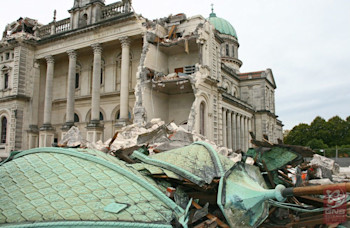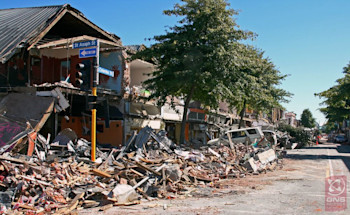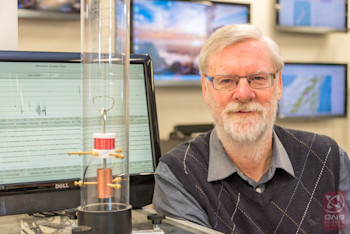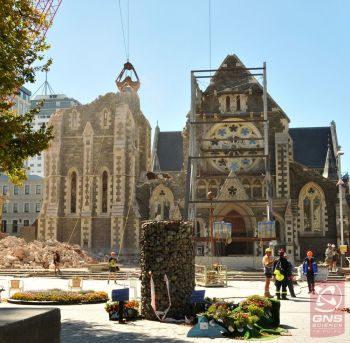
Remembering the Christchurch earthquake 8 years on
Today is the 8th anniversary of the 2011 Christchurch Earthquake. Ken Gledhill was the Director of GeoNet at the time and shares some memories from the time and reflects on how GeoNet has been shaped by the quake.
Eight years ago on 22nd February, Christchurch was struck by a M6.2 earthquake that caused widespread destruction and tragically claimed the lives of 185 people.
Ken Gledhill, GNS Science geohazards scientist, was the Director of GeoNet in 2011. When the earthquake hit he happened to be at a conference in Wellington with emergency managers from all around New Zealand.
“When the quake happened we got paged and the first thing I did was open my laptop.
“I remember thinking ‘this isn’t good’. It looked like the whole Christchurch area was light up with all the strong motion stations in the area showing severe shaking and this was before even seeing any magnitude information.
“Back then the earthquake analysis system was much more hands on. Although it took us some time to know the magnitude, you only had to look at the map of Christchurch to know it was really serious.
“You kind of knew straight away that this was likely to be a New Zealand changing event.
“Looking down the barrel of a big earthquake is scary. The duty officer, myself and everybody knew lives would have been lost. That really changes the way you think about how to respond.”
The earthquake occurred at 12:51pm and was centred 5km south of Christchurch at a depth of only 5km. The location and time were what caused the quake to be so deadly.
“It’s a very different situation in an urban area than in a remote location. The Darfield earthquake in September 2010 was 40km outside of the city but still did a fair bit of damage in Christchurch.
“The 22nd February quake was almost right under the city at lunchtime in a city that was full of un-reinforced masonry buildings.”
Ken describes the Christchurch earthquake as being the primary event that significantly changed how GeoNet operates.
“We went from being hardly known in the public - except by a group of enthusiasts - to becoming a household name and having our website bookmarked on everyone’s Internet browsers.
“I see Christchurch as the start of what we call the GeoNet community. After that we had people who followed us and followed everything we did. The community is huge – from scientists right through to people in New Zealand and around the world.”
The growth of the GeoNet community was illustrated in the M7.8 Kaikōura earthquake on 14 November 2016. In that quake, 15,840 people filed felt reports compared to only 3778 reports after the Christchurch event.
“One big lesson that we learned from Christchurch is how to make information more accessible, easier to understand and widely available to everyone.
“That’s one of the reasons we went with publishing information really quickly because people wanted it out there even if it wasn’t perfect.
“Even eight years later the loss of life, the suffering of people and the damage to the city is almost unimaginable. One of the big learnings of the event for me was how people turned to GeoNet for support. I learned that science can sometimes comfort as well as inform.”
With every large earthquake that has come since 22nd February 2011, the first consideration GNS Science has now is who has been affected and how we can communicate with them. In this way, we honour the people of Christchurch, who are still teaching us lessons about resilience and enduring strength. Kia kaha.








